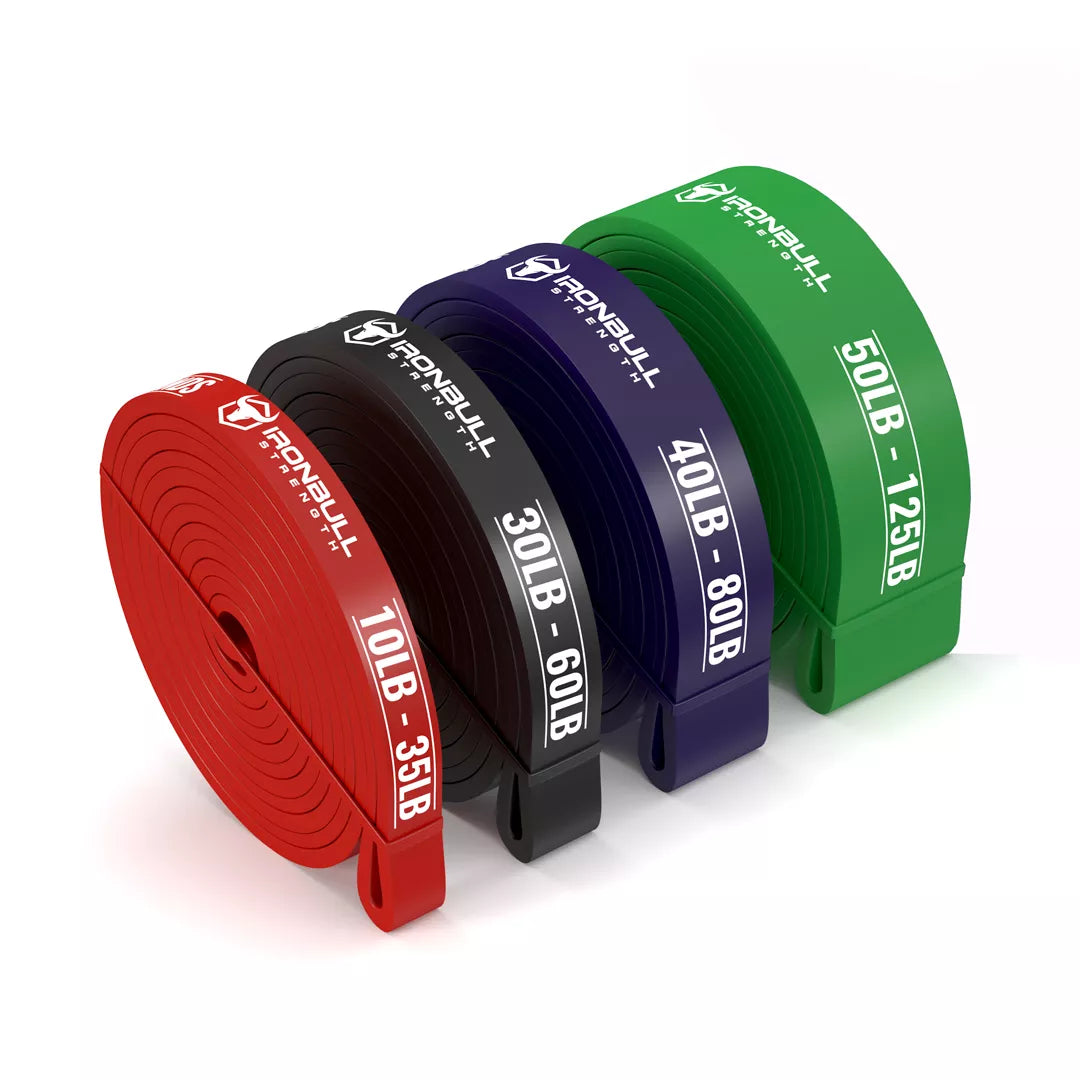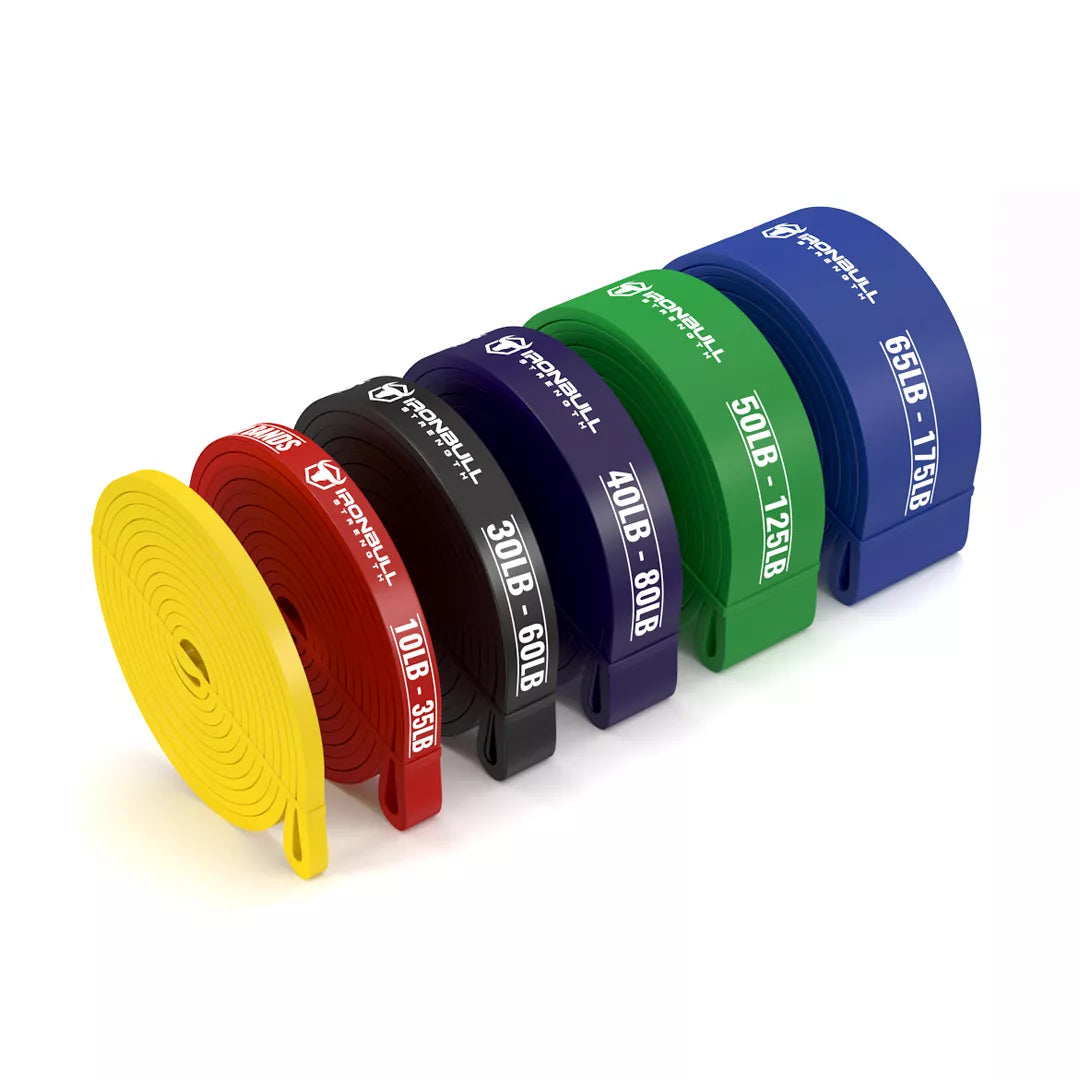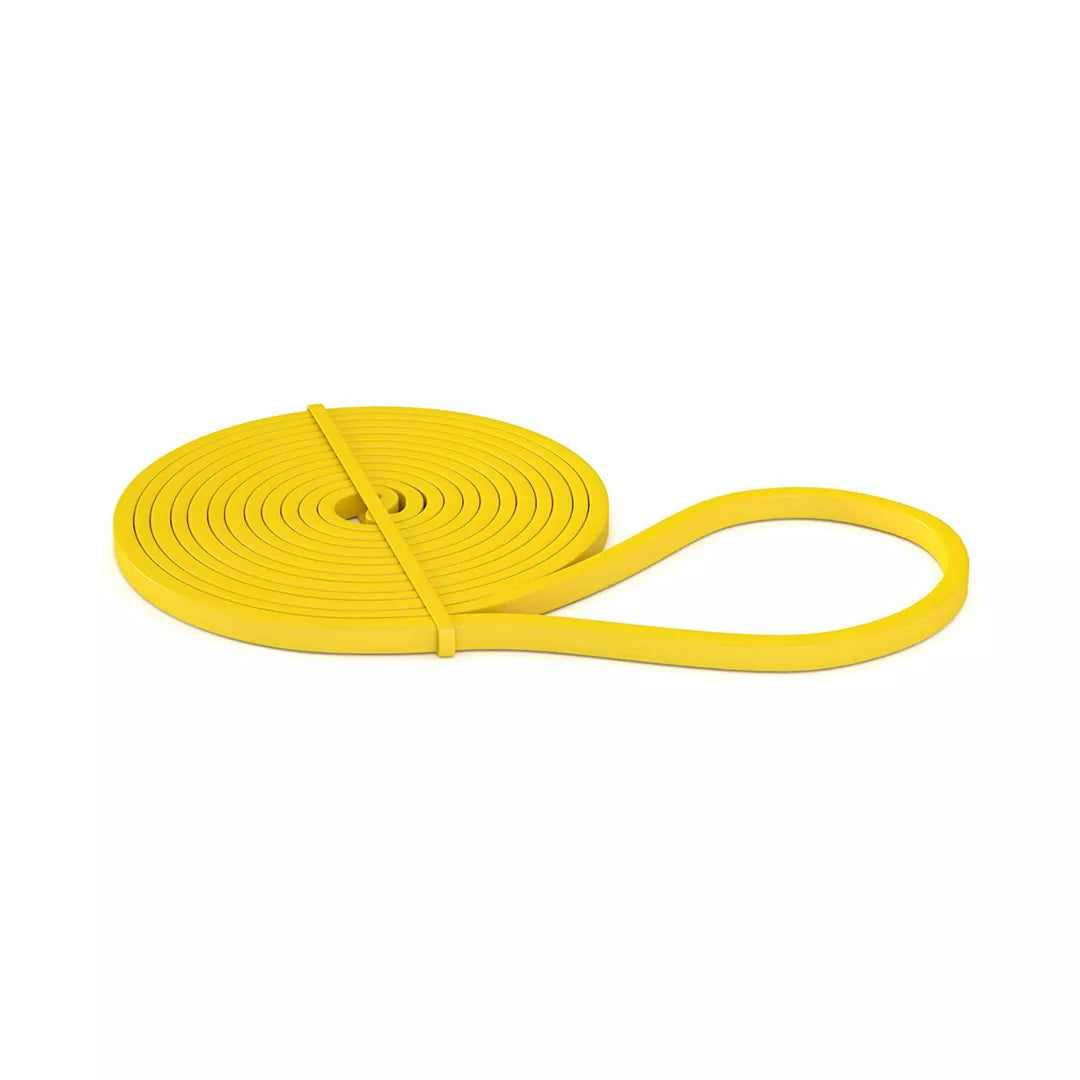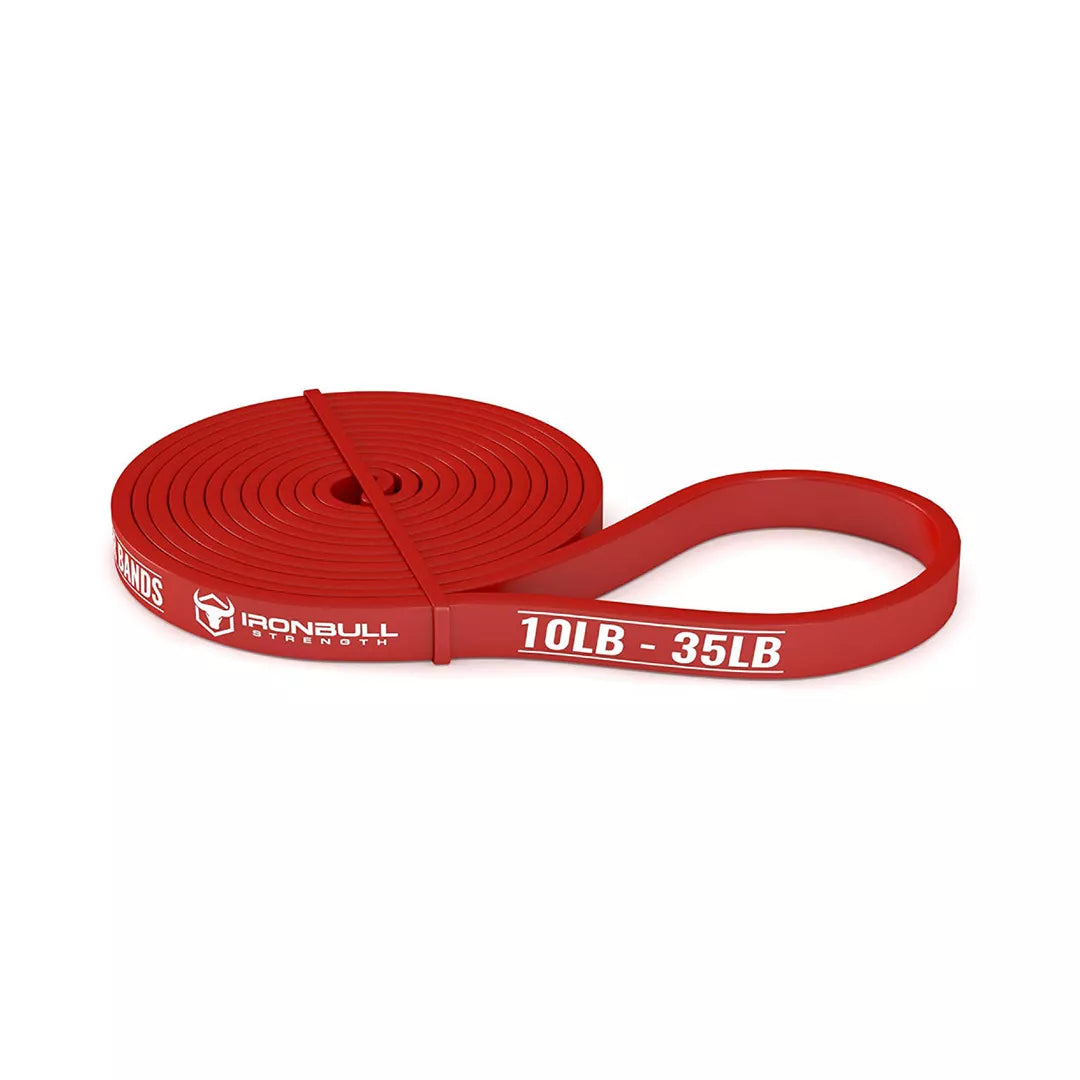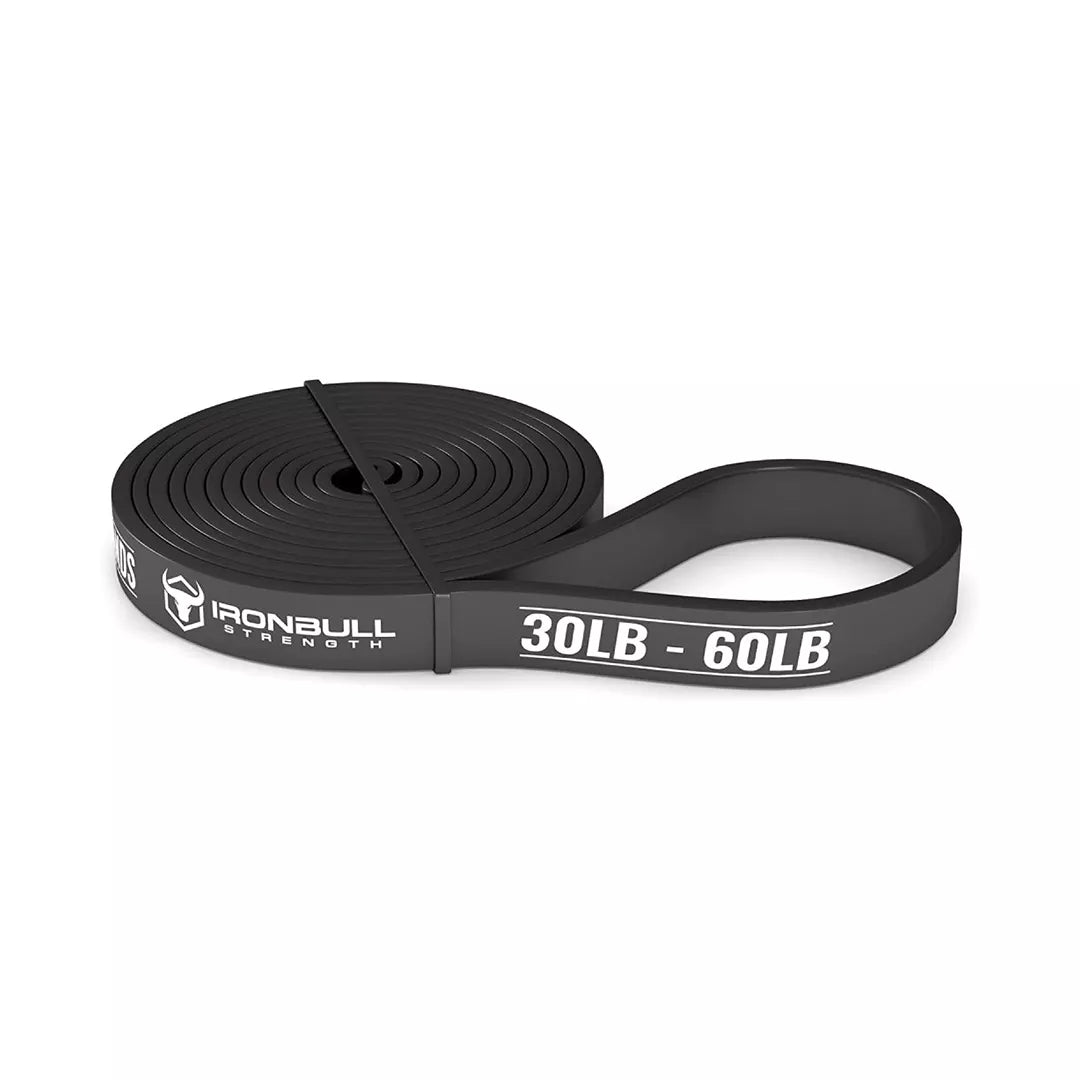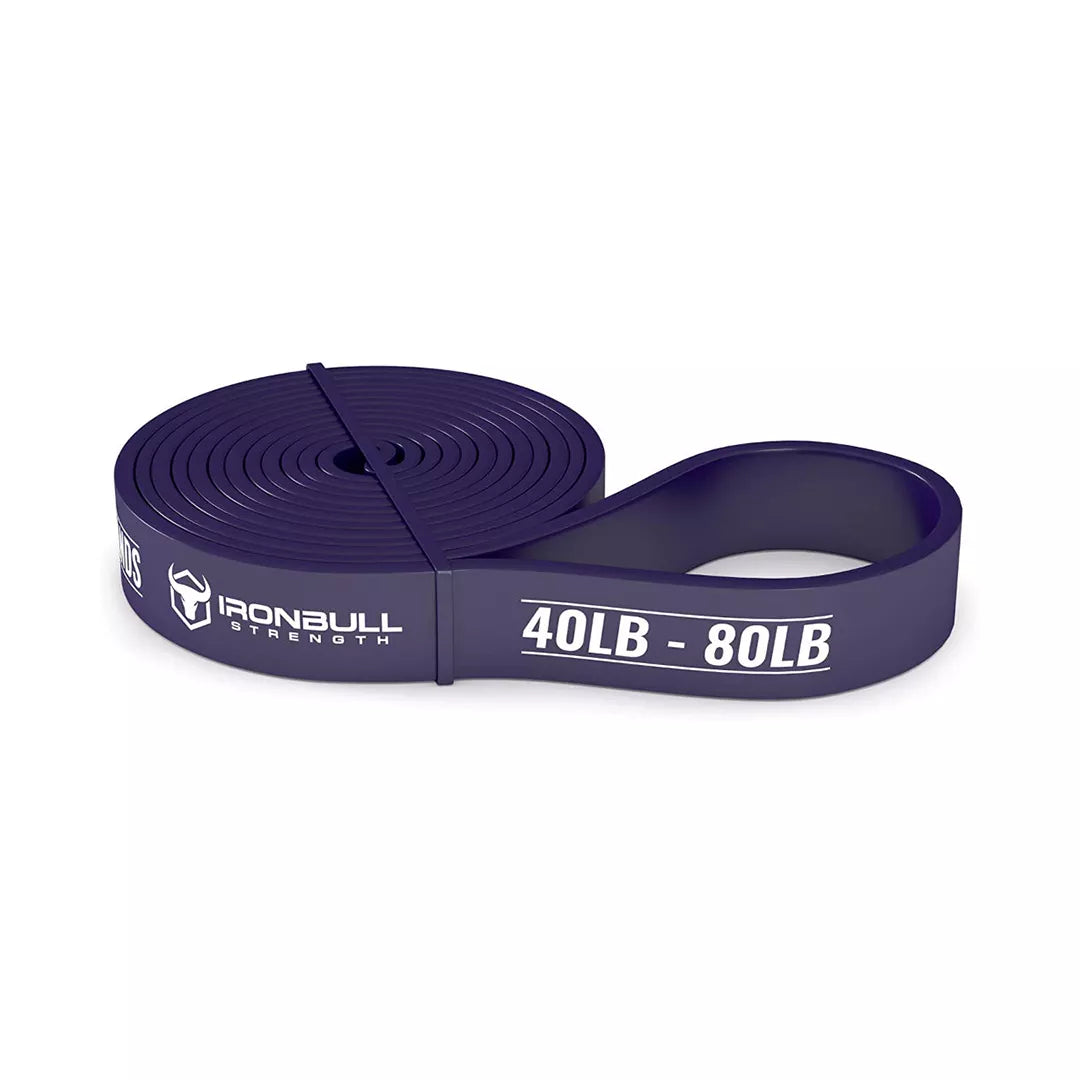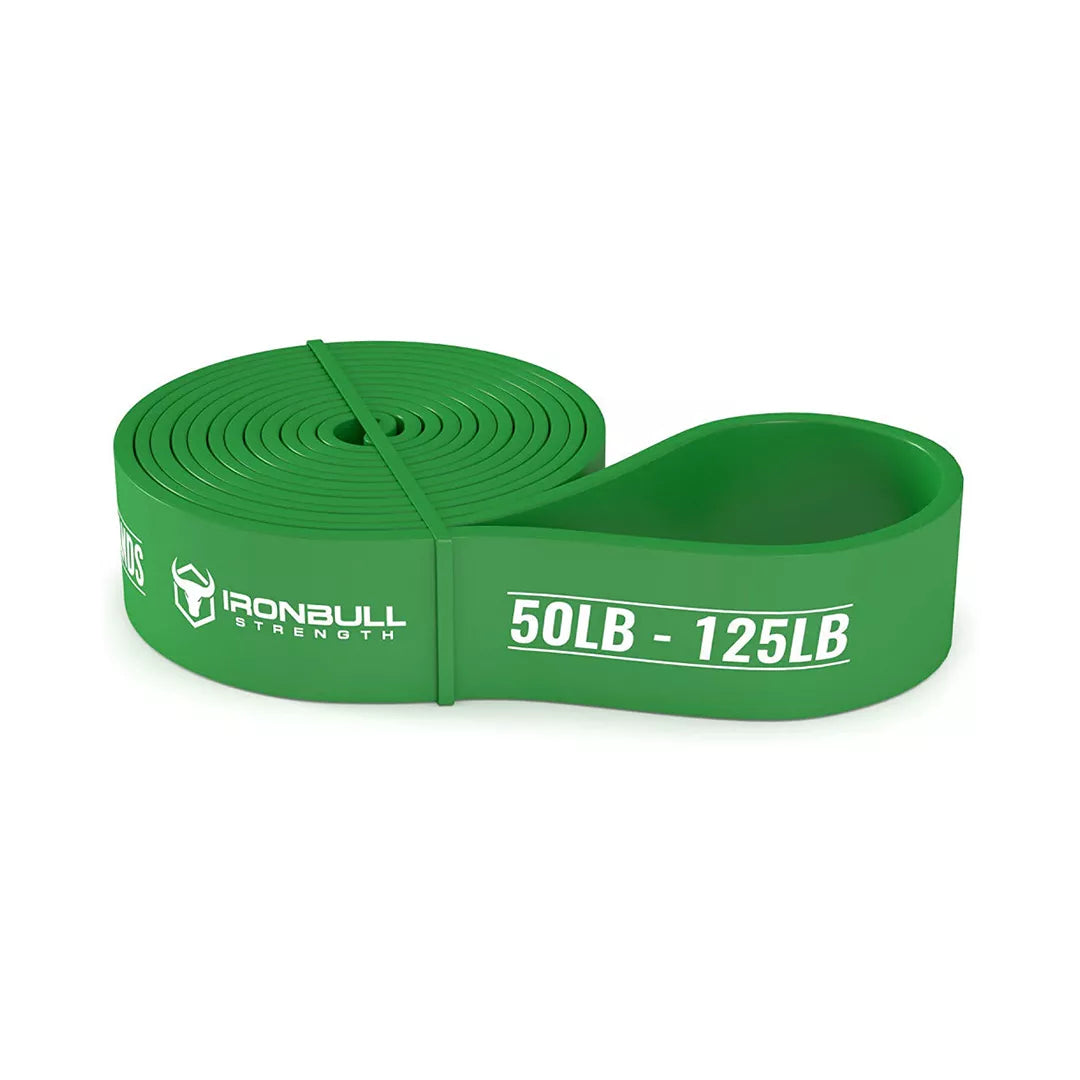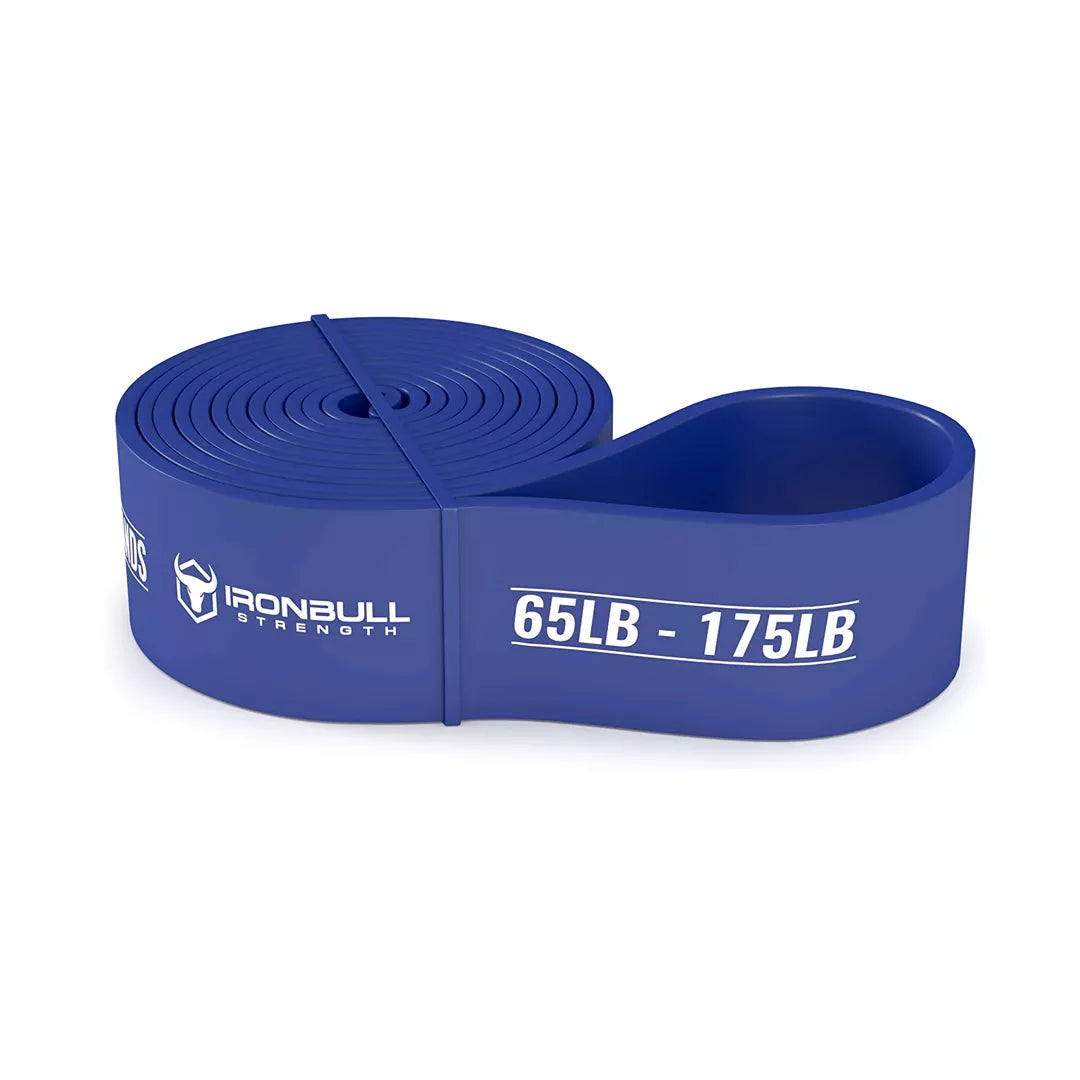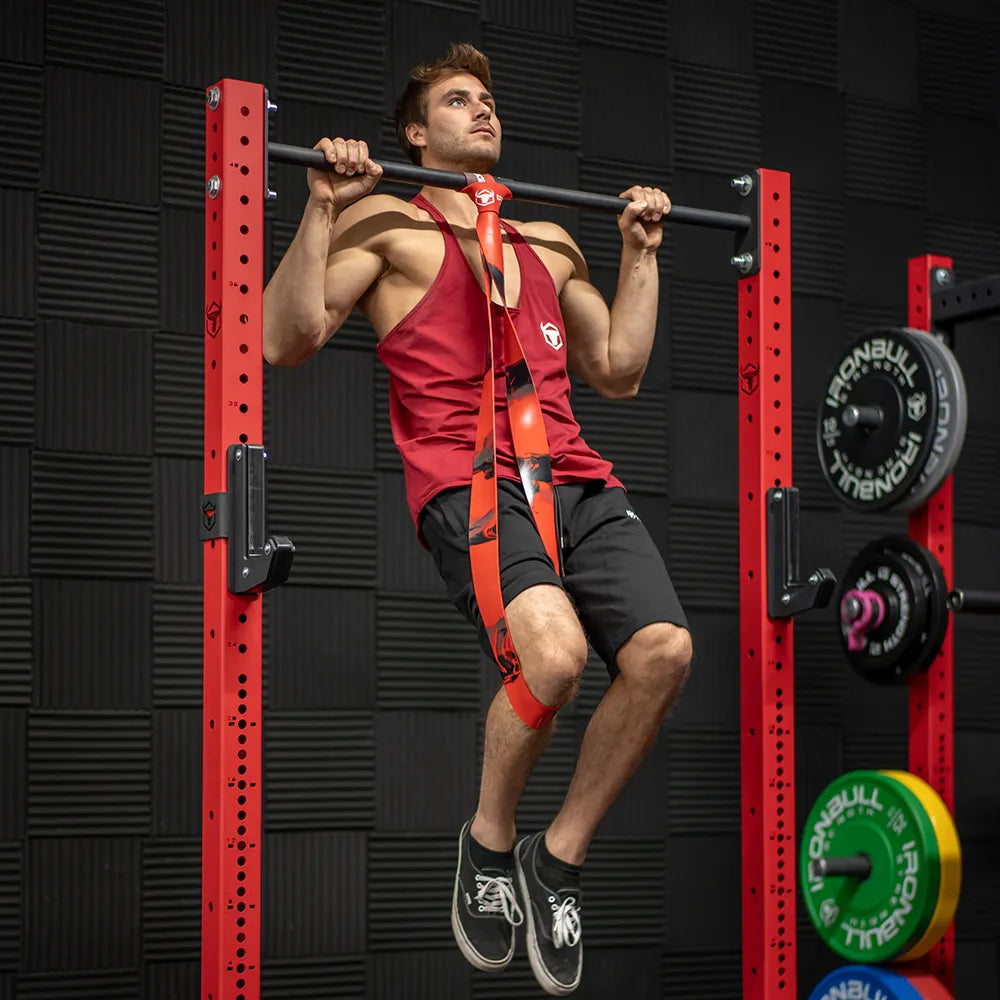Mass Building Chest Exercises with Bands
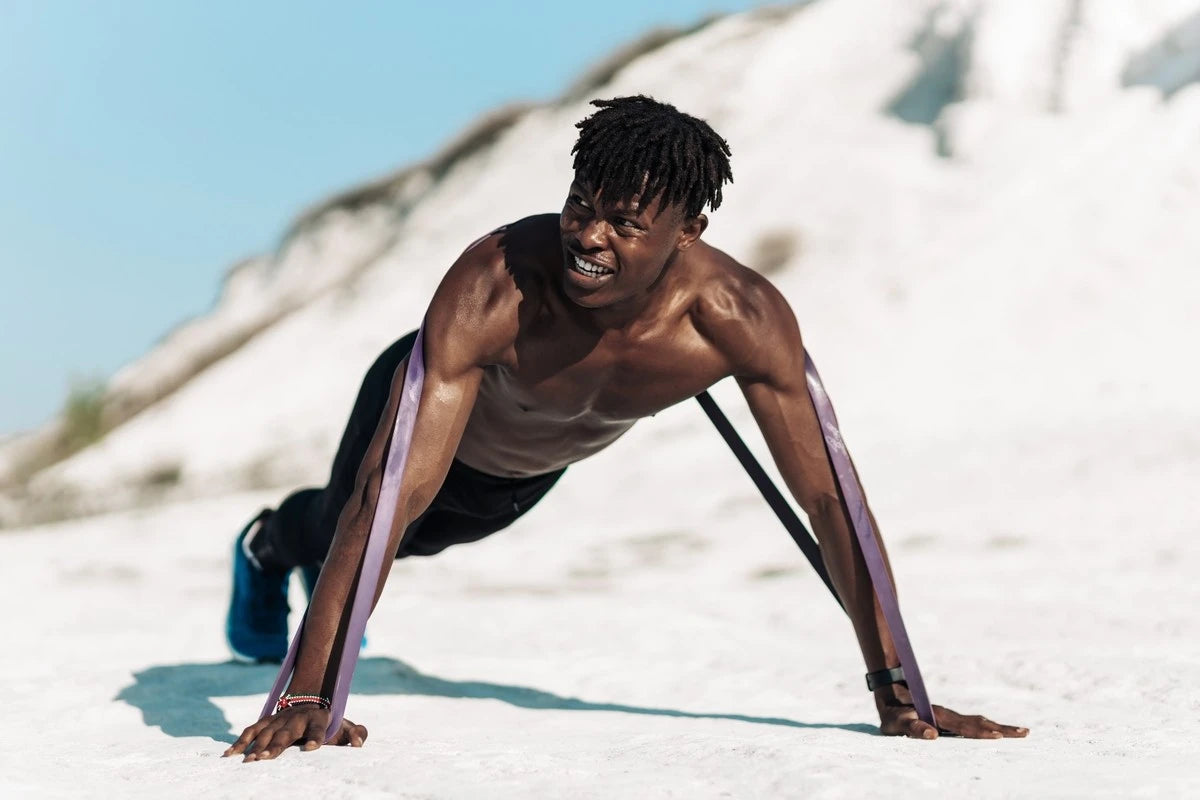
You don’t have to hit the gym and get under the bench press for a great chest workout. Your set of resistance bands will allow you to do every chest move that you can do in the gym and then some. This article provides you with an intense pec-pumping chest workout with bands to hit the lower, mid, and upper chest.
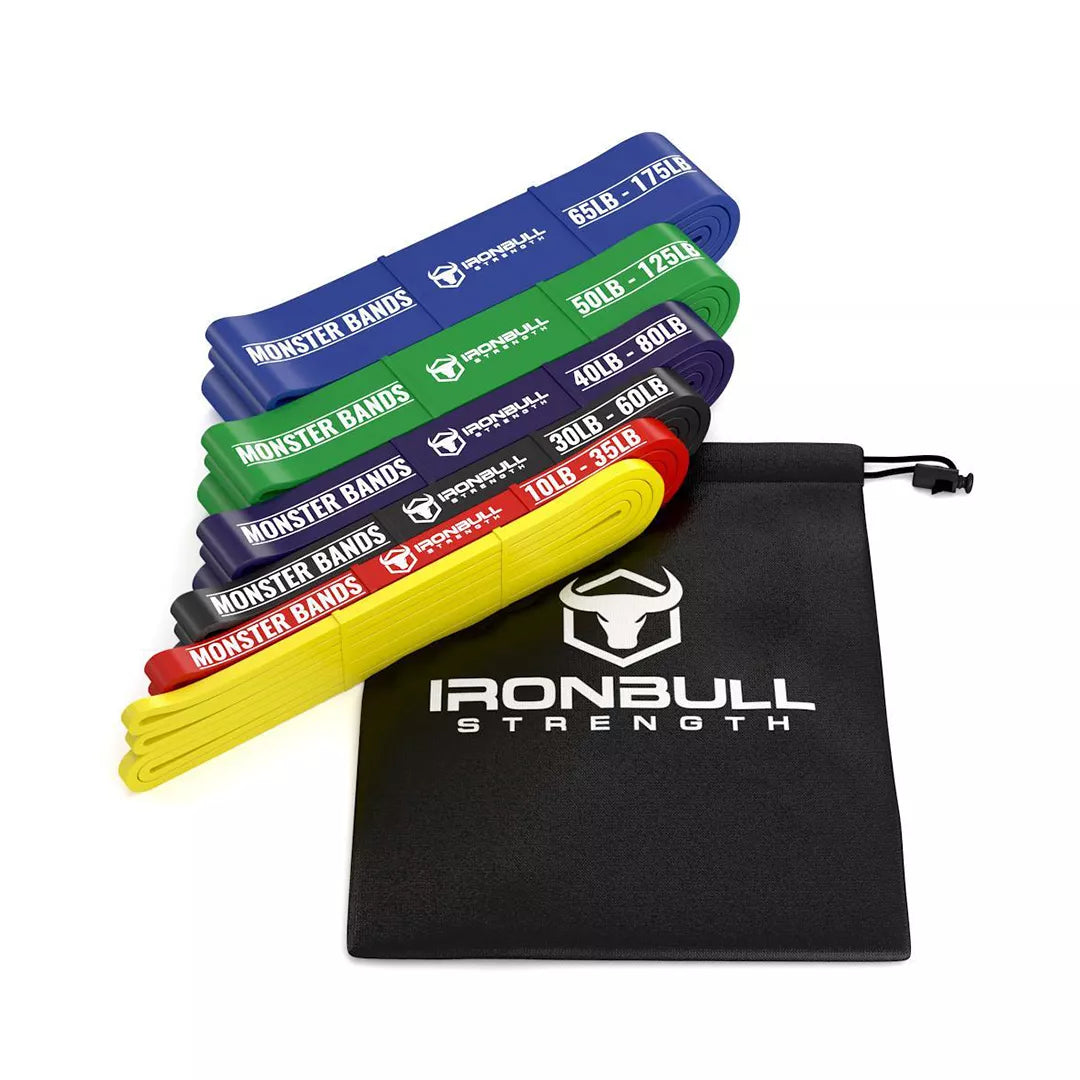
What You’ll Need
When you’re working with resistance bands, it is a good idea to wear workout gloves. This prevents blisters and ensures that sweat doesn’t cause your grip to fail. You will also need to make use of the door anchor piece that comes with your resistance bands.
Of course, you will need a door to connect it to as well. Some of these resistance band chest exercises will be anchored, while others will use your body as the anchor. If you don’t have an internal door to attach your loop resistance band to, you can use the frame of a squat rack or power rack.
Chest Anatomy
The chest, or pectoralis major, is a fan-shaped muscle that has two anatomic sections or heads. The upper clavicular head originates on the collarbone, and the lower sternal head ridges on the sternum or breastbone. These two heads pass outward across the chest wall and merge into a single tendon that attaches to the top of the upper arm (humerus).
When your chest muscle contracts, movement takes place at the shoulder joints. The main function of the muscle is to adduct, flex, and internally rotate the arm. This moves the arm forward and across the chest, as when you are doing a bear hug action.
Resistance Bands 101
Resistance bands are an effective tool for building muscle, enhancing strength, and increasing flexibility. Unlike traditional free weights, chest exercises with bands provide continuous tension throughout the entire range of motion, which can lead to improved muscle activation and growth. That resistance is variable, so that the more you extend the band, the harder the resistance becomes.
There are several types of resistance bands. Loop bands, which comprise a continuous loop, are best suited for the workout to follow.
Iron Bull Strength sells a special range of loop bands that we call Monster Bands. They are made from natural latex and come in six color-coded resistance levels as follows:
- Yellow: 5lb-15lb
- Red: 10lb-35lb
- Black: 30lb-60lb
- Purple: 40lb-80lb
- Green: 50lb-125lb
- Blue: 65lb-175lb
Monster Bands are thick and durable to provide a smooth and consistent resistance. They are perfect for the chest workout with bands detailed in this article.
Using Resistance Bands Effectively
To get the most out of your resistance band chest exercises, it’s important to use proper form and technique. Here are some tips:
- Anchor Points: Secure the band to a stable anchor point, such as a door or a sturdy piece of furniture, to ensure exercise safety and effectiveness.
- Control Your Movements: To maximize muscle engagement, focus on slow and controlled movements, particularly during the eccentric (negative) phase of the exercise.
- Mind Your Grip: Use a firm grip to prevent the band from slipping and to maintain consistent tension throughout the exercise.
- Maintain Tension: Keep the band taut throughout the entire range of motion. Do not allow the band to slack at any point during the exercise.
- Adjust Resistance: Modify the length of the band or use a combination of bands to adjust the resistance level to match your strength and fitness goals.
The Workout
The following exercise band chest workout is designed to challenge you. It maximizes time under tension to keep positive stress on the working muscle. You’ll move through the workout pretty quickly and do high-rep sets to work both fast twitch and slow twitch muscle fibers. Strive to increase the resistance you are using over time to keep the gains coming.
Sets & Reps
On every exercise, we will follow the same set and rep structure. The first set will consist of 20 reps. The next two sets are 10 reps each. The fourth and final set is another 20 reps. You will increase the band resistance for the middle two sets so that those ten reps are challenging.
Band Push Ups
Push-ups are a staple chest exercise. However, the problem that most guys find is that they soon become too easy. You must do high rep sets to feel it in the pecs. Resistance bands allow you to overcome that problem. The band adds extra resistance to make the exercise infinitely more challenging.
To get into position for band push-ups, sit on your knees with the band across your back at the level of your shoulder blades and hold the ends with a palm-forward grip. Then, put your hands on the floor in a push-up position. Now kick your feet back. You should be holding the band taut over your body in the start position.
Now perform your reps, being sure to use proper form with a full contraction and extension on each rep. Bring your chest all the way to the ground and squeeze the pecs at the top.
On your second and third sets, increase the band resistance. If necessary, stack the bands so that there is more than one band around your body.
Single Arm Incline Band Chest Press
For this exercise, we will use the door anchor attachment to secure the band for the pressing movement. On this band chest press, you will be working at an incline, so position the door anchor at about the level of your hip. Now grab the band with your right hand, palm facing forward, and your body facing away from the door. Stagger your feet so that your right foot is behind your left foot. Position yourself far away from the door so that your chest gets a good pre-stretch at the start of the exercise.
Ensure your body is squared up so your chest faces entirely forward. Then brace your torso. Now begin your first set by punching forward at an upward angle to straighten out the band. Be sure to get a full extension and contraction on each set. If you need more tension, step forward slightly.
When it comes to adding resistance on the second and third set, you can either use a heavier band or simply move further away from the door.
Use the same rep scheme on this exercise :
- Set One = 20 reps
- Set Two = 10 reps
- Set Three = 10 reps
- Set Four = 10 reps
Remember that you need to do this exercise on both sides of the body.
Single Arm Flye
The single-arm flye allows you to focus on each side of your pecs individually to achieve the maximum level of peak contraction. For this exercise, you will also be using the door anchor. This time position the anchor point at the level of your mid torso. Stand side on to the door with your torso square on. Use a band that will make it challenging to rep out on the last 25 percent of your set. To increase the resistance, you can either shorten the length of the band or step further away from the door. You want there to be plenty of tension on the chest at the start of the movement.
Begin with your chest opened and your head up. Now bring your arm all the way across your body. Your elbow should be slightly bent and locked in that position. Feel the peak contraction on every single rep.
Use the same 4-set rep scheme on this exercise.
Be sure to do this exercise on both sides of the body.
Band Chest Squeeze
This exercise uses your body as the anchor. Stand on the band so that your feet provide that anchor point. The closer your feet are together, the less resistance you will create on the band. You want to be able to grab the band with both hands at the level of your mid-thigh so that there is a taut tension on it. Use a palms-up grip to hold the band.
The movement involves bringing the band up and your hands together to touch at the level of your chin. This will squeeze your pecs together for a forceful contraction at the top of the movement. Remember that this is a chest movement and not a bicep movement. So, you do not want to perform any type of curling motion. To avoid that, be sure to keep your arm straight throughout the exercise (no bending at the elbows). Focus on bringing your elbows up and squeezing the chest as you bring your pinkies together.
Perform the same 4-set rep scheme as previously.
The Workout Summarised:
| Exercise | Sets | Reps |
| Banded Push-Up | 4 | 20/10/10/20 |
| Single-arm incline band chest press | 4 | 20/10/10/20 |
| Single arm flye | 4 | 20/10/10/20 |
| Band chest squeeze | 4 | 20/10/10/20 |
Chest Workout with Bands FAQ
Q: Can you build a chest with resistance bands?
A: Yes, you can definitely build your chest with resistance bands. Bands provide variable resistance that creates concentric stress on the pectoral muscles. So long as you are using a band resistance that is challenging on the last few reps, you will cause sufficient stress to promote an adaptive response. Follow your exercise band chest workouts with muscle-building nutrition and rest to build chest mass.
Q: How to train the upper chest with bands?
A: To train the upper chest with resistance bands, anchor the band behind you at about hip height. Then, hold the band with an overhand grip at shoulder level. This will create an upward band angle. Press your arms up at a 45-degree angle so your hands meet at full arm extension. This will activate the upper portion of your chest.
Q: What are the top 3 chest exercises?
A: The top three chest exercises are the chest press, the push-up, and the flye. The chest muscles’ primary function is to press the arms forward and together. There are various ways to do the chest press, including with a barbell, dumbbells, and resistance bands. The push-up is a version of the chest press where you press yourself away from the floor. The flye exercise stretches the pectoral muscles through their complete range of motion, making it an excellent exercise to pair with the chest press.
Summary
This band chest workout should be performed at a good pace to keep the tension on the pecs throughout. Keep your rest between sets to just 30 seconds. However, when you are doing your set, do not rush it. Focus on full extension and peak contraction on every single rep. On the eccentric (negative) part of the rep, slow it down so that it is twice the time of the positive part.
Try this resistance band chest workout for six weeks, and you will see gains in both size and strength. Once you’ve tried it, we’d love to hear your feedback. Comment below to share your experience.

